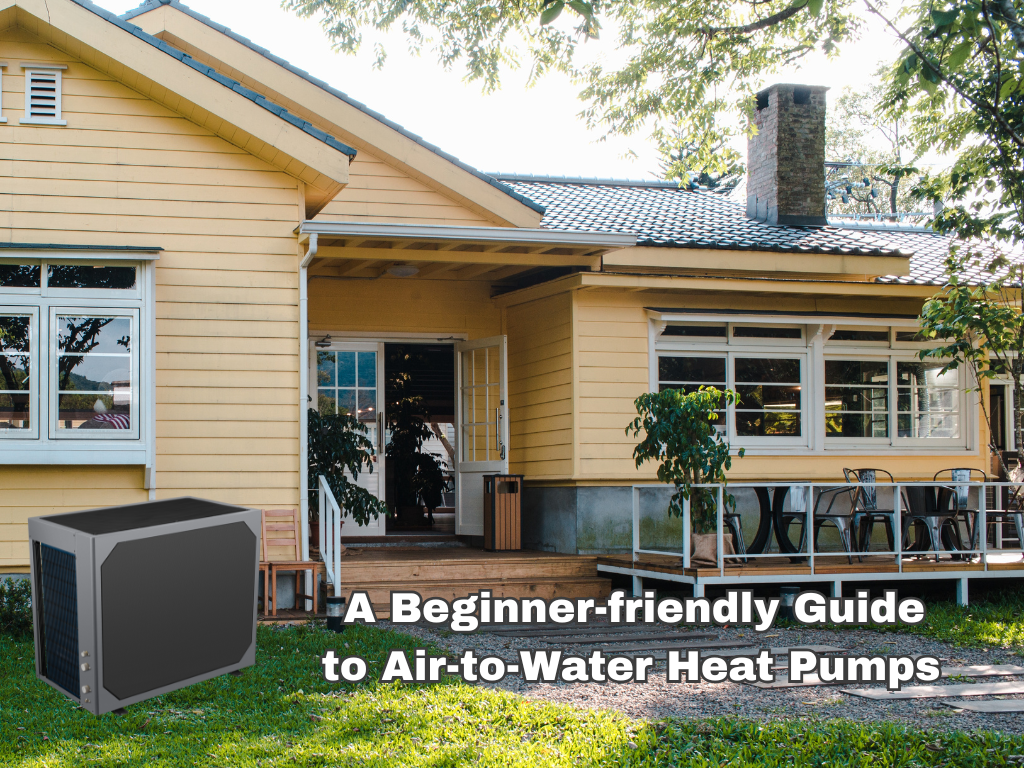In the past five years, the air-to-water heat pump market has continued to develop rapidly. Air-to-water heat pumps have become the first choice for HVAC systems. More and more families use air-to-water heat pumps for heating, cooling and hot water. Often, beginners will make some mistakes, and improper operation will often lead to machine failure, shortened service life, etc.
Before you start. Do you understand air-to-air heat pumps? What should you pay attention to when using an air-to-water heat pump? You must understand the following content.
An air-to-water heat pump is a renewable heating system that absorbs heat from the outside air and transfers it into water, which can then be used for space heating & cooling, underfloor heating, or domestic hot water (DHW).
With a Coefficient of Performance (COP) between 3 to 5, heat pumps can produce 3 to 5 times more energy than they consume. Instead of burning fossil fuels, it moves thermal energy from free fresh air using electricity, making it an energy-efficient and eco-friendly alternative to gas or oil boilers.
A major advantage of air-to-air heat pumps is that they can provide heating, cooling and hot water. This makes many homeowners choose this powerful system. It can also help you save on your energy bills while reducing your carbon footprint.

Oil and gas boilers have a maximum heating efficiency of 90%, while electric resistance heaters have a heating efficiency of 100%. The efficiency of air-to-air heat pumps can reach up to 500%, which means they can generate up to 5 times the heat energy. Air source heat pumps only use a small amount of electricity, helping you save on energy. Not only that, but it can also connect to your solar system and the grid to help you save even more on your energy bills.
An air-to-water heat pump can provide heating in the winter, cooling in the summer, and hot water all year round. This is something that other heating systems cannot do. A heat pump is equal to a heating system, a cooling system, and a water heater. For heating, you need to connect your fan coil unit, floor heating, radiator and expansion tank. For cooling, you only need to connect your fan coil unit. For hot water, you need to connect your domestic water tank.
Air source heat pumps offer significant environmental benefits, making them a more sustainable option than traditional heating systems. Unlike combustion-based heating systems, this heat pump doesn’t generate heat by burning fuel. Air-to-water heat pumps eliminate fuel storage and emissions. By using less electricity and eliminating reliance on fossil fuels like gas or oil, heat pumps help lower CO2 emissions and contribute to a cleaner, more sustainable future. Air source heat pumps free you from depending on oil and gas, so you no longer have to worry about fuel shortages or sudden price hikes caused by global events.
The outdoor unit should be placed in a sunny, well-ventilated spot. Warmer air helps the system heat more efficiently and use less energy. Make sure there is enough space around the unit for proper airflow and easy maintenance.
Before installation, clean the existing heating system to avoid blockages and loss of efficiency. Insulate all ducts to prevent heat loss and improve energy transfer. To get the most out of your heat pump, consider upgrading your home’s insulation or using larger radiators to better distribute low-temperature heat.
The initial heating process can take longer than traditional boilers because heat pumps supply low-temperature, continuous heat. Depending on insulation, system size, and weather, it may take several hours to bring the space to the target temperature. After that, maintaining the temperature requires much less energy.
Yes, modern air source heat pumps can operate effectively in temperatures as low as -20°C, especially models equipped with inverter compressors or enhanced vapor injection (EVI) technology. However, heating output will decrease as outdoor temperatures drop, so good insulation is important for best performance.
Basic maintenance includes:
This ensures efficiency and prolongs equipment life.
If you will be away for a short time (less than 5 days), do not cut power to the heat pump. Instead, set it to the lowest temperature to maintain frost protection. For longer absences, you can drain the system water completely after consulting your installer.
During winter, the heat pump occasionally enters a defrost cycle to remove ice buildup on the outdoor coil. During this cycle, it may temporarily blow cooler air indoors. This is normal and usually lasts only a few minutes.
The initial heating process can take longer than traditional boilers because heat pumps supply low-temperature, continuous heat. Depending on insulation, system size, and weather, it may take several hours to bring the space to the target temperature. After that, maintaining the temperature requires much less energy.
If the temperature cannot reach the ideal temperature, there are the following problems: 1. The wall is damp and absorbs a lot of heat. 2. The unit is frequently turned on and off, and the temperature cannot be raised steadily. 3. The radiator does not dissipate enough heat, and the heat generated cannot make up for the heat loss.
Air-to-water heat pumps are transforming how we heat buildings, offering an energy-efficient, sustainable, and cost-effective alternative to fossil fuel systems. As energy prices rise and climate goals become stricter, this green technology is gaining momentum across Europe and beyond.
Thinking of switching? Look for air-to-water heat pumps with inverter technology, R290 refrigerant, and EVI compressors for the best performance.
